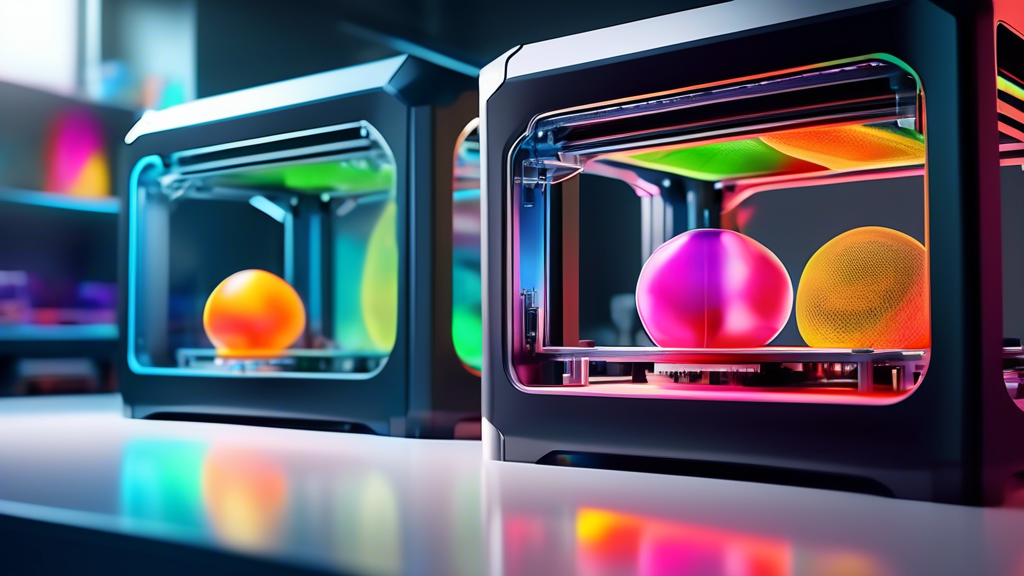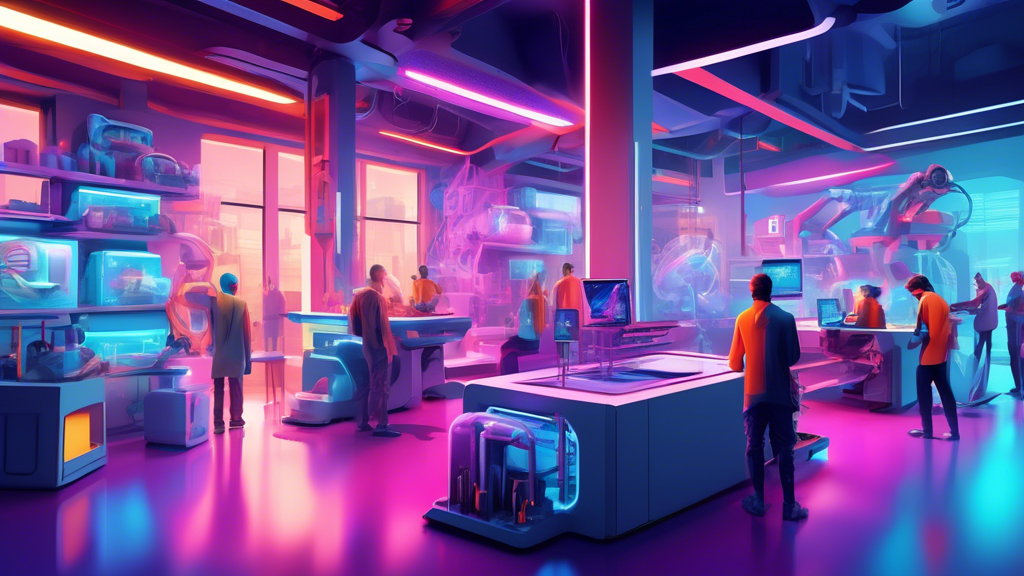Introduction to Fast Printing Evolution
The realm of printing technology has experienced monumental shifts since the advent of the earliest printing presses. From the revolutionary Gutenberg press to today’s cutting-edge laser printers, the history of this technology is adorned with innovations aimed at improving speed and efficiency. In our modern world, fast printing is not just a convenience but a necessity, driving industries towards more agile and efficient processes.
Current Trends and Advancements in Fast Printing
Keeping pace with the demands of businesses and consumers, the latest trends in fast printing focus on enhancing print speed without compromising quality. Innovations such as digital presses and improved workflow software have paved the way for more sophisticated printing solutions. These advancements not only cater to the needs of large-scale industries but also support small businesses and home offices, making fast printing more accessible and reliable than ever before.
Introduction to Fast Printing Evolution
The metamorphosis of printing technology has been nothing short of revolutionary. From the ancient presses to the sophisticated digital systems of today, each leap forward has brought about profound changes in how we produce and disseminate information. The concept of fast printing – both a necessity and a marvel in modern times – underscores an era where speed, efficiency, and quality are paramount in printing processes.
Brief Overview of the History of Printing Technology
The journey of printing technology began with woodblock printing in the East around 200 AD, a method that laid the groundwork for the innovation of movable type in 11th century China. However, it was Johannes Gutenberg’s invention of the mechanical movable type printing press around 1440 that revolutionized the printing world, setting the pace for the mass production of books in Europe. This pivotal invention not only democratized knowledge, but also paved the way for the Enlightenment and the modern knowledge-based economy. Over centuries, the advent of lithography, offset printing, and screen printing continually transformed the landscape, each method bringing improvements in speed and print quality.
The twentieth century witnessed a digital revolution in printing with the advent of laser printers in 1969, and subsequently, the first high-resolution inkjet printers in the 1970s. These technologies set the stage for the rapid, on-demand printing capabilities we rely on today and opened new arenas in terms of personalization and accessibility of print media. The evolution from analog to digital was crucial as it enabled the fast printing capacities desired in contemporary corporate, academic, and personal settings.
Introduction to the Current Trends and Advancements in Fast Printing
In the present landscape, the quest for accelerated printing solutions continues to thrive, driven by advancements in areas such espouses as system efficiency, eco-friendliness, and the integration of artificial intelligence. The modern fast printing technology not only focuses on speed but also emphasizes smart features like automation, real-time adjustments, and predictive maintenance to enhance productivity. With businesses and consumers alike demanding quicker turnarounds, the industry has seen a significant shift towards technologies that can rapidly produce high volumes of print materials without sacrificing quality.
One of the significant trends in the fast printing sector includes the development of LED UV printing, which dries inks instantly and significantly increases the speed of production. Additionally, the rise of cloud-based printing solutions allows for seamless remote printing capabilities, further speeding up the printing process by eliminating traditional bottlenecks. Moreover, recent innovations have brought forth sophisticated color matching software that accelerates the pre-printing stages by ensuring accuracy and consistency from the outset, reducing the need for reprints and adjustments.
The incorporation of artificial intelligence into printing systems is another forward-thinking trend. AI boosts the speed and efficiency of printing by optimizing every aspect of the print workflow, from data management and document composition to the automated correction of errors in real-time. This integration signifies a monumental shift towards more connected and intelligent production environments where fast printing is central.</)).
Cutting-Edge Technologies in Fast Printing
The advancement in fast printing technologies has revolutionized the way we think about and utilize printing in various sectors. Cutting-edge technologies not only enhance the speed but also significantly improve the efficiency and quality of printing. This fosters greater productivity and cost-effectiveness in operations that rely heavily on printing processes.
Description of Breakthrough Technologies in the Printing Industry
Several groundbreaking technologies have emerged in the realm of fast printing, each bringing distinctive benefits to the table. One such innovation is the integration of LED technology in printers. LED printers work similarly to laser printers but use LEDs instead of a laser to charge the drum. The outcome is a remarkably faster warm-up time, increased printing speed, and reduced maintenance costs.
Another transformative technology is the advancement of inkjet technology through the introduction of PageWide technology. Unlike traditional inkjet printers that use a moving printhead, PageWide printers have a stationary printhead that spans the entire width of the paper. This allows for entire pages to be printed in a single pass, drastically speeding up the printing process and enhancing productivity.
Additionally, 3D printing technology continues to innovate at a remarkable pace. Modern 3D printers are now capable of printing with a variety of materials, including plastics, resins, metals, and more, at speeds that were unimaginable a few years ago. The enhancements in speed coupled with the ability to print in a variety of materials broaden the applications of 3D printing across industries like manufacturing, healthcare, and construction.
Analysis of How These Technologies Enhance Printing Speed and Efficiency
The LED technology in printers not only speeds up the printing process but also enhances efficiency by reducing power consumption. Compared to conventional laser printers, LED printers are more energy-efficient and offer a lower total cost of ownership. This is crucial for businesses looking to enhance operational efficiency while minimizing environmental impact.
PageWide technology significantly enhances the efficiency of inkjet printers by eliminating the repetitive motion of the printhead. This results in fewer mechanical parts, which reduces the likelihood of breakdowns and lowers maintenance costs. Moreover, PageWide printers can produce prints at speeds comparable to those of laser printers, making it an ideal choice for environments that require both high quality and volume printing.
In the context of 3D printing, speed enhancements mean faster production cycles, which is a critical factor in manufacturing and prototyping. The ability to quickly print components or entire products can drastically reduce the time-to-market for new inventions and designs. Furthermore, as 3D printers become more capable and adaptable, their efficiency in using materials and reducing waste contributes significantly to sustainability efforts within industries.
Overall, these innovative technologies are setting new standards in the printing industry by not only accelerating the printing processes but also by promoting cost-efficiency and environmental sustainability. Businesses that adopt these fast printing technologies are likely to see enhanced competitiveness and profitability as a result of improved operational efficiencies.
The continuous evolution of fast off printing technologies represents a significant leap forward in the printing industry. Companies and consumers alike stand to benefit immensely from these advancements, making it an exciting time for all stakeholders involved in printing and related fields.
Impact and Applications of Fast Printing in Various Spin>
Revolutionizing Publishing with Fast Printing
The publishing industry has seen remarkable improvements thanks to the latest in fast printing technology. Traditional methods, which often involved lengthy and cost-intensive processes, have made way for faster, more efficient printing solutions. This transition not only speeds up the production of books and magazines but also significantly reduces costs, benefiting both publishers and consumers. Streamlined workflows enabled by fast printing technologies mean that time from manuscript to market has drastically decreased, helping publishers respond quicker to market demands and reduce overhead expenses.
Enhancing Advertising Through Improved Printing Speed
Advertising, an industry that thrives on timely and impactful message delivery, has particularly benefited from advancements in fast printing technology. Modern businesses can produce high-quality marketing materials in a fraction of the time once required. This capability allows for rapid response to market trends and more personalized, targeted marketing campaigns. Fast printing technologies, such as digital printing presses that can handle large volumes at incredible speeds, are a game-changer for promotional strategies. By reducing the lead time on marketing campaigns, businesses can ensure their messages are as timely and relevant as possible.
Benefits to Manufacturing: Just-in-Time Production
In the realm of manufacturing, fast printing goes beyond paper and ink. Additive manufacturing, or 3D printing, a notable offshoot of fast printing technology, plays a crucial role in streamlining production processes. Manufacturers leverage these advancements to create parts on-demand, drastically reducing the need for large inventories and enabling just-in-time production models. This shift not only minimizes waste and storage costs but also enhances the ability to customize parts and products quickly and efficiently.
Future Trends and Potential Developments in Fast Printing
Looking into the future, the potential developments in fast printing technology hold promising prospects for further transforming industries. The ongoing advancement in inkjet technologies, for instance, is anticipated to bring even faster speeds and higher quality outputs at lower costs. Additionally, the integration of AI and machine learning into fast printing systems could automate many of the processes involved, from adjusting print parameters to detecting and correcting errors. This would further optimize printing workflows and reduce human intervention, leading to unprecedented levels of efficiency.
Moreover, sustainability is becoming increasingly crucial in all sectors, and fast printing is expected to contribute significantly to eco-friendly business practices. Newer technologies are aimed at reducing power consumption and using more sustainable materials. For example, the development of biodegradable inks and recyclable print media aligns with global sustainability goals and can greatly diminish the environmental impact of printing processes.
The continued exploration of these technologies indicates a bright future for fast printing, suggesting a scenario where speed and efficiency are achieved without compromising quality or sustainability. As industries continue to evolve, the role of fast printing in driving innovation and competitiveness cannot be overstated. The transformative impact of these technologies is evident across various sectors, paving the way for more advanced, sustainable, and cost-effective printing solutions that will cater to the needs of tomorrow’s economies.
Conclusion
The journey through the landscape of fast printing technology reveals a sector that is not only dynamic but also integral to the operational success across various industries. The advent of groundbreaking technologies, as discussed, underscores a trend toward increasing efficiency and reducing turnaround times which are essential in today’s fast-paced world. From the publishing houses demanding quicker press times to advertising firms seeking rapid prototyping solutions, the ripple effect of advanced fast printing technologies is evident and growing.
Embracing the Future
As we look to the future, the potential for further enhancements in fast printing technology continues to hold immense promise. Innovations in 3D printing, digital printing, and eco-friendly solutions are poised to further transform the landscape, making it crucial for businesses to stay abreast of the latest developments. Adopting these new technologies will not only drive efficiency but also foster sustainability and innovation in product creation.
Final Thoughts
In conclusion, the evolution of fast printing technology presents an exciting array of opportunities and challenges. For businesses and industries that depend on printing solutions, staying updated with these advancements is not just beneficial but necessary for continued growth and competitiveness. As fast printing continues to evolve, its impact is set to broaden, marking a new era in how we think about and engage with printing technology.



